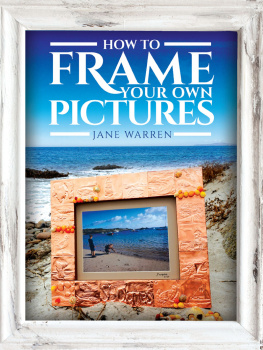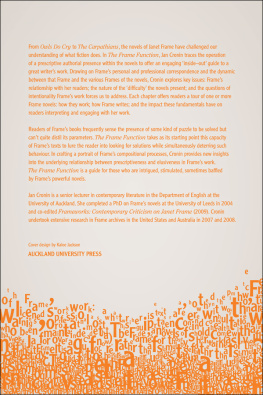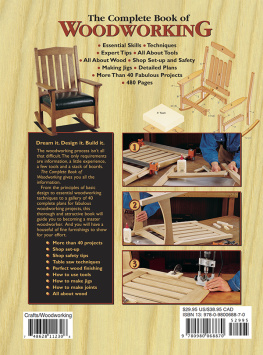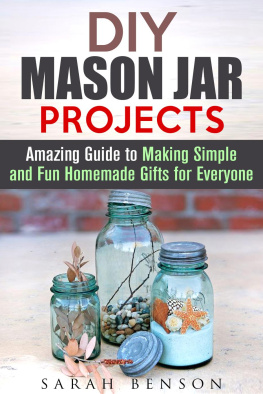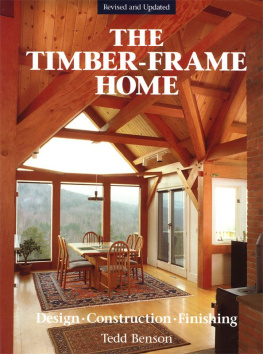Pagebreaks of the print version

HOW TO FRAME YOUR OWN PICTURES
For Bea and Willem, my two creative sparks
With special thanks to Andrew Edson, and Roze, John, George, William and Oliver Sherwood
Tools A link with our past, the human past, the hand
American pop artist Jim Dine, whose parents owned a hardware store .
HOW TO FRAME YOUR OWN PICTURES
JANE WARREN
First published in Great Britain in 2021 by
Pen & Sword WHITE OWL
An imprint of
Pen & Sword Books Ltd
Yorkshire Philadelphia
Copyright Jane Warren 2021
ISBN 9781526775719
ePUB ISBN 9781526775726
The right of Jane Warren to be identified as Author of this work has been asserted by her in accordance with the Copyright, Designs and Patents Act 1988.
A CIP catalogue record for this book is available from the British Library.
All rights reserved. No part of this book may be reproduced or transmitted in any form or by any means, electronic or mechanical including photocopying, recording or by any information storage and retrieval system, without permission from the Publisher in writing.
Photographs by Bea Mulder and Jane Warren
Design: Paul Wilkinson
Pen & Sword Books Limited incorporates the imprints of Atlas, Archaeology, Aviation, Discovery, Family History, Fiction, History, Maritime, Military, Military Classics, Politics, Select, Transport, True Crime, Air World, Frontline Publishing, Leo Cooper, Remember When, Seaforth Publishing, The Praetorian Press, Wharncliffe Local History, Wharncliffe Transport, Wharncliffe True Crime and White Owl.
For a complete list of Pen & Sword titles please contact:
PEN & SWORD BOOKS LIMITED
47 Church Street, Barnsley, South Yorkshire, S70 2AS, England
E-mail:
Website: www.pen-and-sword.co.uk
Or
PEN AND SWORD BOOKS
1950 Lawrence Rd, Havertown, PA 19083, USA
E-mail:
Website: www.penandswordbooks.com
INTRODUCTION TO EASY DIY FRAMING
PICTURE FRAMES ARE both protective and decorative and definitely very satisfying to create. When my son started school in 2009, I set up a picture-framing micro-business from a studio in my woodland garden in West Sussex. I called it Woodland Pie because it seems to me that making a picture frame is a bit like making a pie a series of satisfying small steps, but not too much of any one stage. I think this makes it fun. It also means you can make a frame pretty quickly, once you have done it a few times.
Ive always enjoyed hobby framing having undertaken a brilliant short course in 2002 at the wonderful West Dean College in West Sussex, between writing assignments. Since then, Ive developed my skills and done quite a lot of experimentation. I believe that framing should be creatively expressive, rather than an exercise in military precision. So Ill also show you fudges and fixes to keep that positive energy flowing. Every frame is different and no frame has to be perfect; just good enough Id certainly have appreciated a framing book that was a bit more relaxed and organic when I was experimenting with this rewarding craft.
As well as eight bespoke projects, I reveal my tried and trusted shortcuts to making something rather more long lasting than a pie, showing how you too can discover the satisfaction of showcasing treasures as well as creating framed gifts on a budget.
Even if you have no previous knowledge of framing, youll learn simple techniques and discover how investing in a few essential hand tools and basic materials can save hundreds of pounds on your framing costs while helping you create high-quality handmade gifts for family and friends (if you feel like sharing).
Using my step-by-step instructions and easy-to-follow techniques, as well as insider tips, youll be able to get started quickly on a wide variety of enjoyable projects.
The Woodland Pie framing style is all about creating: making easy, attractive and artistic frames from basic timber and always using hand-painted or handmade finishes.
I really dont like most of the expensive (and dull) factory-finished timber mouldings you find in picture framing shops (and most picture framing instruction books), especially when the possibilities for decorating your own frames can easily and inexpensively transform bare timber into any manner of finishes, including gold leaf, black enamel (good for photographic prints), a colourful distressed look, copper embossed metal or decoupage.
Watch out for my insider tip on how to create a lustrous, versatile, go-to paint effect using nothing other than leftover household emulsion paint, water, and wire wool!
In my experience, picture framing books also usually include far too much information, which can be off-putting. So Ive set about writing an accessible how-to book, not a picture framing encyclopedia. It aims to cut out the unnecessary, and get you hobby framing in no time with flair and creativity.
First, Ill introduce you to the small palette of affordable materials and hand tools you really need and wont ask you to invest in anything non-essential. I cant bear equipment lists that go on and on and make you think, Really? Do I need all this to do that? putting you off before youve even started.
WHY FRAME?
Frames are utilitarian works of craft, but they dont have to be purely functional. While a glazed frame has an important practical function protecting delicate artwork such as watercolours or line drawings from moisture and dust they also lend atmosphere to a work of art (or photograph) and amplify the message they are sending. You only have to think of a majestic oil painting in an elaborate gilded frame, or a black and white snap in a contemporary black box frame with crisp white mount to appreciate all the good PR that frames give the images they showcase.
IT WASNT UNTIL the Florentine Renaissance of the early fifteenth century, that the idea of frames for pictures was born. Before then, most Italian artists painted on elaborate wooden panels which were covered in a layer of linen pasted on to the hidden timber sub-structure. But in 1423, a banker named Palla Strozzi the richest man in Florence commissioned Gentile da Fabriano to paint a religious panel painting with a gilded frame surrounding it. This unleashed the creativity of Florentine woodworkers. Drawing from classical architecture and the decorative vocabulary they already used in carving panels and chests, they began to produce ever more elaborate decorative frames. But while painters earned fame and fortune for their artistic works, the highly skilled frame makers remained largely anonymous as they do today.

A photograph of my daughters desk displayed in an elaborate vintage gilded frame; a light-hearted pairing which suggests the importance of childhood creativity. It also shows the impact an ornate frame can make .

